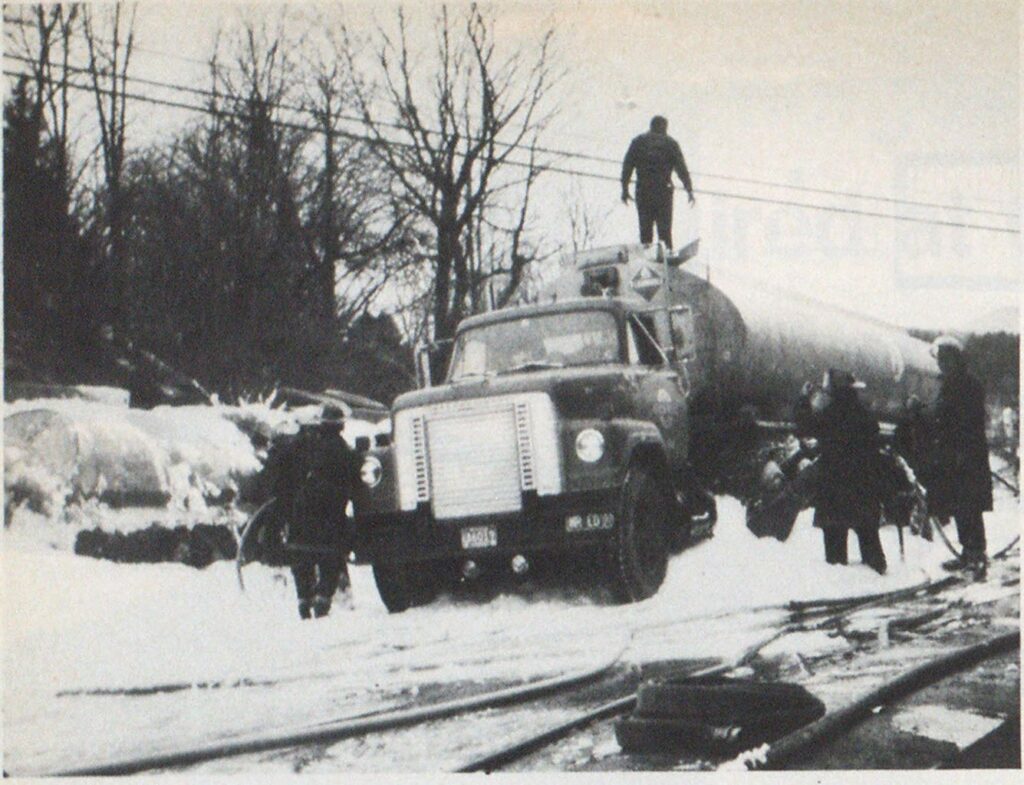
Vermont Plan Speeds Aid For Hazardous Incidents
features

With an increasing number of hazardous materials incidents occurring, Vermont fire service leaders developed a two-part program to handle such emergencies efficiently.
Of the 250-odd fire departments in Vermont, only a dozen are paid, and funding is extremely tight. Money to purchase acid-gas-entry-suits, explosive gas meters, chlorine kits, and other tools of the hazardous materials trade is virtually nonexistent for a small department. However, Vermont has a number of perceptive fire officers and state officials who are effective in what is sometimes called interagency communications. They figured that someplace within the state there was the equipment and expertise to allow every local fire chief to effectively respond to any hazardous materials threat if an effective communications system could be developed.
In late 1977, representatives of the Vermont State Firefighters Association, the Vermont Agency of Transportation, and various other agencies of state and local government perceived a need to be able to handle hazardous materials incidents. Beginning as an ad-hoc committee, they drafted a report that included legislative recommendations which in turn created a Vermont Hazardous Materials Committee about the same time that hazardous materials disasters occurred in Pensacola, Fla.; Waverly, Tenn.; and Youngstown, Fla.
Two parts to plan
The committee identified two basic needs which were later met. One was the establishment of a response plan within the state government that would have two main components. The first component included a communications system so people with specific expertise could be alerted and moved to the scene and up-to-date inventories of available resources and equipment.
The response plan included a hazardous materials emergency telephone number, 802-828-3100. During normal working hours, this number is answered at state civil defense headquarters in Montpelier. At all other times, it is answered by a Vermont State Police dispatcher at the Middlesex barracks, just off 1-89 in central Vermont.
The second component of the cooperative hazardous materials incident response is the “Vermont Hazardous Materials On-Scene Action Guide,” which provides basic information, including the one-call emergency telephone number. When a fire chief in any Vermont town has a hazardous materials incident, he calls the emergency number and provides the information requested by the worksheet section of the guide. The worksheet was designed to obtain essentially the same information requested by CHEMTREC so that once the sheet is completed, either the chief on the scene, the local dispatcher or the state emergency dispatcher can phone CHEMTREC if need be.
Available assistance
By making the one call to the Vermont hazardous materials emergency number, the chief in charge of the incident can get assistance from one or more of the following state agencies:
State Police—Traffic control, security, air bottle refill compressor and other equipment, as well as assistance at all incidents involving explosives.
Office of Civil Defense—Personnel, equipment and aid at all incidents where evacuation is necessary.

Environmental Agency—Personnel and equipment from the Department of Forests and Parks, game wardens from the Fish and Game Department, a hazardous materials spills specialist from the Water Resources Department for any incident of actual or threatened water pollution or contamination.
Department of Agriculture—Pesticides specialist.
Department of Health—Radiologists, health officers, safety and health inspectors.
Office of the Governor.
Department of Labor and Industry—Fire prevention specialists.
Agency of Transportation—Trucks and heavy equipment from the Highway Department, Department of Motor Vehicles personnel for matters related to enforcement of hazardous materials transportation regulations.
Public Service Board—Gas and pipeline specialists and for concerns involving all public utilities.
Military Department—National Guard personnel and equipment.
Agency of Human Services—When there is a need to relocate, feed or house evacuees.

Seminars conducted
Sixteen two-hour seminars, one in each fire mutual aid district, have recently been completed to provide and explain the Vermont hazardous materials incident response plan and the “Vermont Hazardous Materials OnScene Action Guide” to some 250 fire departments, 75 emergency medical squads, 60 police departments, and dispatch personnel. Funded by the Vermont Agency of Transportation, and developed and conducted for the Vermont State Firefighters Association by State Fire Instructors Norman Bird on the East and Walter Swarkowski on the
West, the seminars were designed to train the trainers of each local emergency response organization.
In each seminar, instructors used six overhead transparencies and 130 color slides as building blocks of a visual program. In each of the 16 areas, they left local trainers with 12 color slides, six overhead transparencies, and a one-page
lesson plan that contained the essence of the presentation.

A serious effort was made to maximize both the total number of trainees and the variety of emergency services personnel attending each session. Six weeks prior to the first session, a mass mailing of a covering letter and one copy of the “Vermont Hazardous Materials On-Scene Action Guide” went to 700 fire, police, emergency medical services, and dispatch personnel, as well as to mayors and town managers. The mass mailing letter was a teaser. It told the recipient he could obtain more information and additional copies of the guide at a local session to be announced later. The second notification provided more specific information and announced a time and place for the local meeting. The third notification was a phone call to each local emergency service organization seven days prior to the training session. Phone calls are timeconsuming and expensive, but they add a personal touch that helps to bring out attendees.
As a result of extensive state and local cooperation and communication in Vermont, a fire chief or other emergency services responder is no longer on his own in obtaining expert assistance or specialized equipment.

